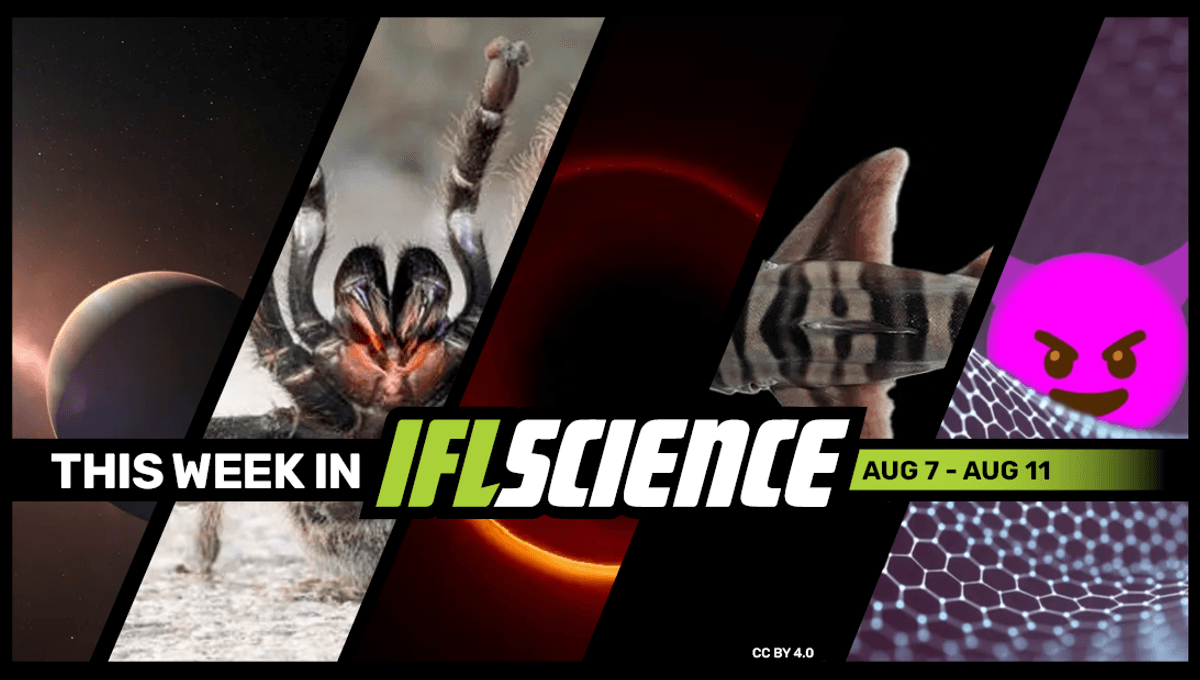
This week a new species of tarantula showed off its locks of golden hair, astronomers have set their next target following the first-ever image of a black hole, and a new shark species was discovered in Australia with some funky-looking teeth. Finally, we learned about the first name ever given in print for a dinosaur bone, and why it’s surprisingly funny.
Subscribe to the IFLScience newsletter for all the biggest science news delivered straight to your inbox every Wednesday and Saturday.
Longest Ever Time-Lapse Of An Exoplanet Squashes 17 Years Into 10 Thrilling Seconds
A new video has captured a huge exoplanet 12 times the mass of Jupiter orbiting its star over a 17-year period, condensed down to a thrilling 10-second time-lapse – and you can definitely take time out of your day to appreciate the fact that you can watch this amazing feat right now on your phone. Read the full story here
Meet The Fancy New Persian Gold Tarantula, With Locks Of Golden Hair
The Persian Gold Tarantula is a newly discovered fancy-pants arachnid that was recently found in northwestern Iran. With glorious locks of woolly, golden hairs, this spider was announced to the world just in time for Tarantula Appreciation Day on August 8. Read the full story here
After First-Ever Image Of A Black Hole, What Are We Zooming In On Next?
The Event Horizon Telescope (EHT) provided astronomers with the first-ever images of supermassive black holes, including Sagittarius A*, which sits at the center of the Milky Way. Those incredible images captured for the first time the shadows of black holes. Now, astronomers have a new goal in mind. Read the full story here
New Shark Species With Human-Like Teeth Discovered In Australia
Down in the deep waters off the northeastern Australian coast, you might be lucky enough to come across a brand new species of shark. The painted hornshark is a newly described species that belongs to the order Heterodontiformes, characterized by its rather unusual human-like molars. Read the full story here
“Demon” Quasiparticle Finally Observed After Decades Of Predictions
Plasmons are truly peculiar quasiparticles. They arise from quantized oscillations in plasma, and just like light is an electromagnetic oscillation with its own particle, the photon, other oscillations can create something similar. One of the weirdest plasmons of all is without a doubt Pines’ Demon, but finally, after 67 years, it has been observed. Read the full story here
TWIS is published weekly on our Linkedin page, join us there for even more content.
Feature of the week:
Giant Testicles Inspired The First Name Ever Given In Print For A Dinosaur Bone
An enormous femur was retrieved in Oxfordshire, England, back in 1676, but, at the time, discovers weren’t sure what they were dealing with. However, the bone’s nad-like appearance resulted in this historic find being given a hilarious name – Scrotum humanum. Read the full story here
Source Link: TWIS: New Video Shows Longest Ever Time-Lapse Of An Exoplanet, "Demon" Quasiparticle Finally Observed, And Much More This Week